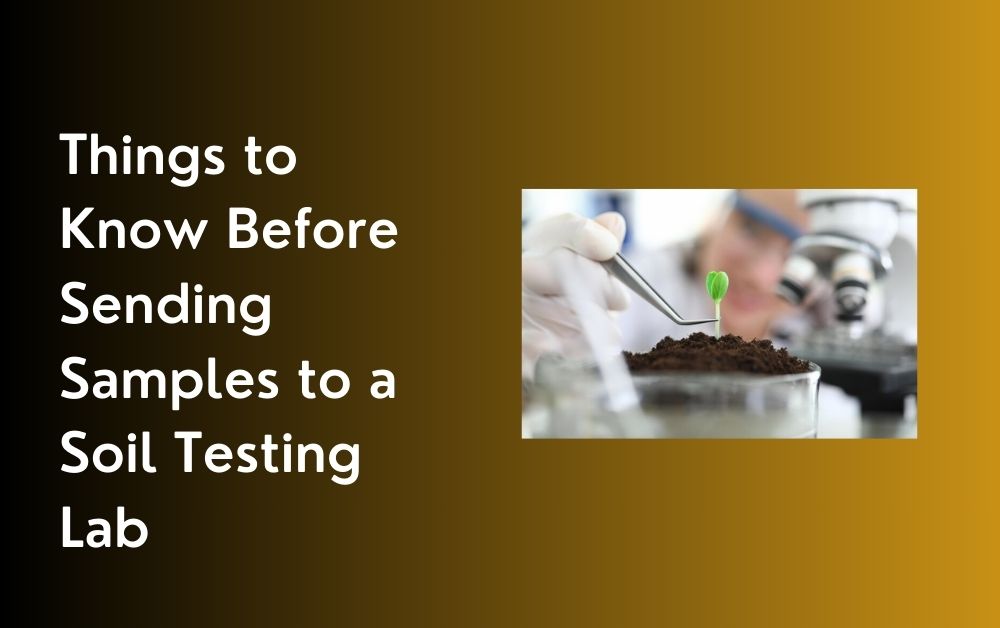
Soil testing is a vital tool for anyone involved in agriculture, landscaping, or construction, providing essential insights into soil health and suitability for various uses. Before you send soil samples to a laboratory for analysis, it’s important to understand the correct procedures and factors that can affect the accuracy and usefulness of the results. This blog covers essential steps and tips for preparing and sending soil samples to a lab.
Understanding the Purpose of Soil Testing
Why Test Soil?
Soil testing provides valuable information on nutrient content, pH levels, contamination, and other characteristics essential for effective soil management. This information helps in making informed decisions about fertilization, crop selection, and site development.
Benefits of Accurate Soil Testing
Accurate testing can enhance plant growth, increase agricultural yields, and prevent costly overuse of fertilizers. It also helps in identifying contaminated sites and planning remediation strategies, ensuring environmental safety and compliance with regulations.
Preparing for Soil Sampling
Knowing What Tests Are Needed
Different projects may require different types of soil tests. Common tests include nutrient analysis, pH level, organic matter content, and contaminants. Identify your specific needs based on your project goals—whether it’s improving crop production, preparing a site for construction, or assessing environmental contamination.
Timing and Seasonal Considerations
The timing of soil sampling can significantly impact test results, especially for nutrients that vary seasonally. For agricultural purposes, it’s often best to sample soil in the fall or spring before planting. This timing helps in making necessary amendments before the growing season begins.
How to Collect Soil Samples
Tools and Equipment
Use clean, non-reactive tools such as stainless steel or plastic shovels and buckets to avoid contaminating the soil samples. Even small traces of metal from galvanized or brass tools can alter the levels of micronutrients like zinc or copper in the soil sample.
Sampling Techniques
- Depth: For agricultural testing, collect samples from the top 6 to 8 inches of soil. For gardens, sampling depth may vary depending on root depth.
- Pattern: Ensure samples are taken from several locations within the test area to get a representative sample. Use a zigzag or grid pattern to cover the area comprehensively.
- Number of Samples: More samples generally provide a more accurate picture of average soil conditions across a large area.
Handling and Labeling
Once collected, place soil in clean plastic bags or containers. Avoid using materials that might react with soil components. Clearly label each sample with relevant information such as the date, sample location, depth, and any specific testing requested.
Sending Samples to the Lab

Choosing the Right Lab
Select a lab with appropriate certifications and a good reputation for accuracy. Check if the lab specializes in agricultural, environmental, or geotechnical soil testing, depending on your project’s needs.
Packaging and Shipping
Package the samples securely to prevent loss or contamination during transport. Use sturdy containers and cushioning materials if necessary. Ship samples promptly after collection to avoid changes in soil chemistry that could affect test results.
Communication with the Lab
Provide the lab with detailed information about your project and testing needs. Include any special instructions or concerns you have about the samples. Clear communication helps ensure that the tests performed will meet your specific requirements.
After Receiving the Results
Interpreting the Results
Understanding soil test results can be complex. If possible, request a consultation with the lab or a soil expert to discuss the outcomes and implications for your project.
Implementing Recommendations
Use the soil test results to adjust soil management practices or to design remediation strategies. This might include adjusting pH levels, applying specific nutrients, or planning environmental cleanup efforts.
Conclusion
Sending samples to a soil testing lab is a critical step for anyone needing detailed information on soil quality and characteristics. Proper sampling, handling, and communication with the lab are crucial to obtaining accurate and useful results. By following these guidelines, you can maximize the benefits of soil testing, leading to more informed decision-making and better outcomes for your projects, whether they are agricultural, environmental, or construction-related.
Note:- To read more articles visit on guestaus.





